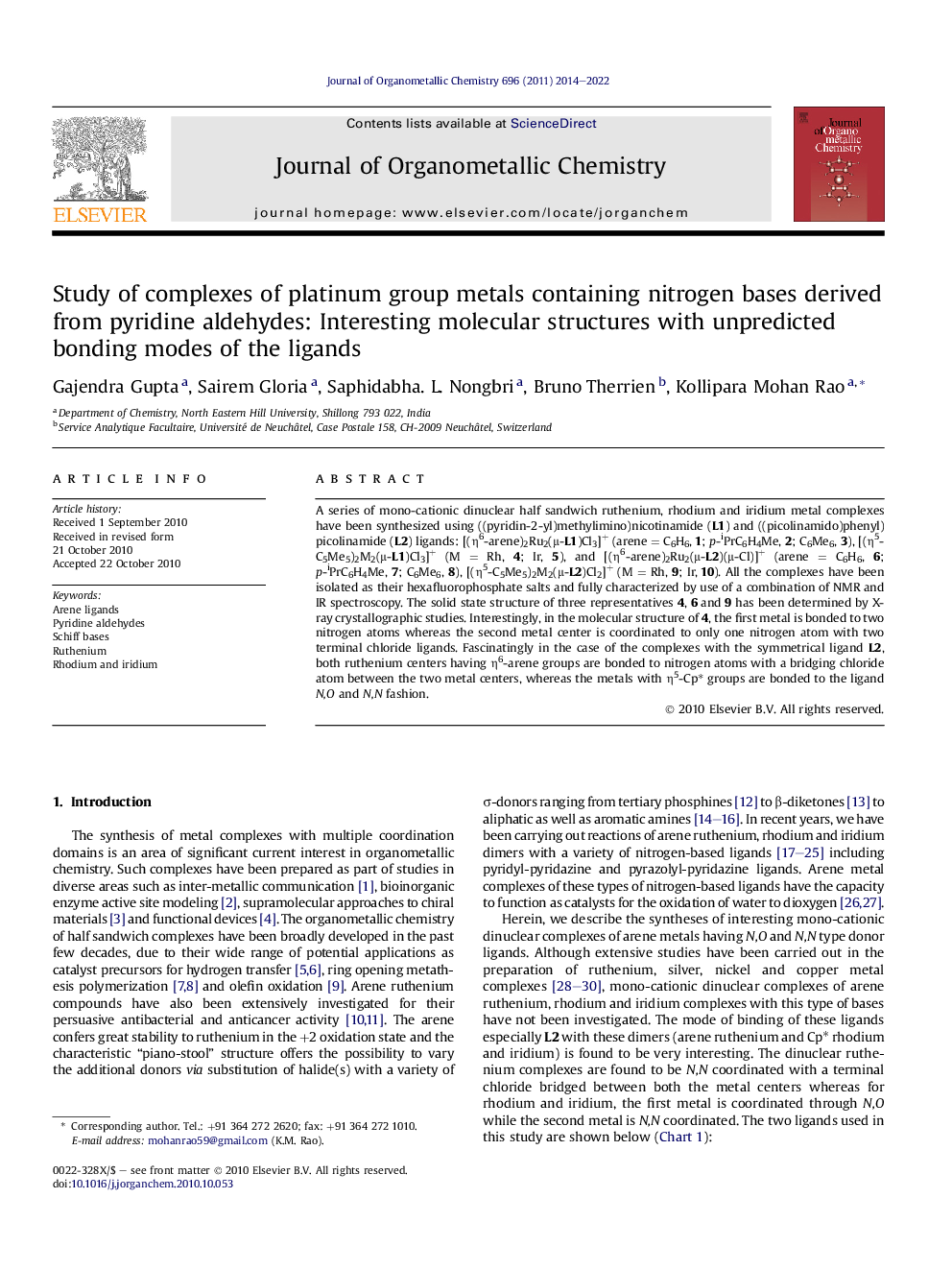| کد مقاله | کد نشریه | سال انتشار | مقاله انگلیسی | نسخه تمام متن |
|---|---|---|---|---|
| 1326626 | 977439 | 2014 | 9 صفحه PDF | دانلود رایگان |
A series of mono-cationic dinuclear half sandwich ruthenium, rhodium and iridium metal complexes have been synthesized using ((pyridin-2-yl)methylimino)nicotinamide (L1) and ((picolinamido)phenyl)picolinamide (L2) ligands: [(η6-arene)2Ru2(μ-L1)Cl3]+ (arene = C6H6, 1; p-iPrC6H4Me, 2; C6Me6, 3), [(η5-C5Me5)2M2(μ-L1)Cl3]+ (M = Rh, 4; Ir, 5), and [(η6-arene)2Ru2(μ-L2)(μ-Cl)]+ (arene = C6H6, 6; p-iPrC6H4Me, 7; C6Me6, 8), [(η5-C5Me5)2M2(μ-L2)Cl2]+ (M = Rh, 9; Ir, 10). All the complexes have been isolated as their hexafluorophosphate salts and fully characterized by use of a combination of NMR and IR spectroscopy. The solid state structure of three representatives 4, 6 and 9 has been determined by X-ray crystallographic studies. Interestingly, in the molecular structure of 4, the first metal is bonded to two nitrogen atoms whereas the second metal center is coordinated to only one nitrogen atom with two terminal chloride ligands. Fascinatingly in the case of the complexes with the symmetrical ligand L2, both ruthenium centers having η6-arene groups are bonded to nitrogen atoms with a bridging chloride atom between the two metal centers, whereas the metals with η5-Cp∗ groups are bonded to the ligand N,O and N,N fashion.
A series of mono-cationic dinuclear half sandwich ruthenium, rhodium and iridium complexes have been synthesized using ((pyridin-2-yl)methylimino)nicotinamide (L1) and ((picolinamido)phenyl)picolinamide (L2) ligands. Interestingly, the L1 acted as a tridentate ligand (see complexes 1–5) whereas L2 exhibits tetra dentate ligand through different donor atoms with respect to metal. In the complexes 6–8, ligand L2 acts as NN donor whereas in complexes 9 and 10 it exhibits NN, and NO donor modes.Figure optionsDownload as PowerPoint slideHighlights
► The ligand L2 can bind the metals with hexa dentate fashion.
► In the present study L2 binds the metals as tetra dentate bridging chelating fashion.
► The selection of bonding modes is dissimilar for different metals.
► In the case of ruthenium ligand L2 binds through nitrogen atoms whereas in the case of rhodium it binds NN and NO fashion.
Journal: Journal of Organometallic Chemistry - Volume 696, Issue 10, 15 May 2011, Pages 2014–2022
